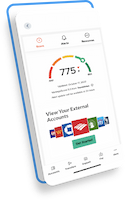If there’s one thing that’s sure in life, it’s that nothing’s for sure — and a lot of life’s little surprises can come with big expenses. Whether it’s an unexpected medical bill or a sudden mechanical problem with your vehicle, emergencies are all but guaranteed… which is why a cushion of cash to fall back on may help.
Although the concept is simple, the actual process of building an emergency fund may feel overwhelming. How much do you need, anyway — and where should you keep it?
We’ve tried to answer all those questions and more so you can focus on the important stuff: the hard work of saving up the money.
What is an emergency fund and why do I need one?
An emergency fund is generally seen as a pool of money kept for the express purpose of funding an emergency. Sometimes it’s also called a rainy day fund. Emergency savings are there to catch you in case of unplanned expenses — or to pay day-to-day living costs if you lose your job.
An emergency fund may be important because it may help keep you from falling back on credit cards or payday loans when you suddenly need money quickly for medical expenses or car repair; loans mean interest, and often fast-cash loans come with particularly high interest rates, which can just make your financial situation that much worse. Having a significant cushion of cash may turn a financial catastrophe like a job loss or major home repair into a mere inconvenience. It’s a whole lot better than finding yourself suddenly, deeply in debt.
How much should I save?
You may have also heard some suggest aiming for three to six months’ worth of living expenses as a rule of thumb — that way, your emergency fund may carry you for a while if you lose your job. (Not sure what six months of expenses looks like for you? Time to get up close and personal with your budget! Fortunately, Quontic has several free Budget calculators that may be able to help.)
That said, for most of us, six months of living expenses is a five-figure total, which might feel like a pretty lofty and unachievable savings goal if you don’t have any savings at all just yet.
Our suggestion? Start small! Every little bit counts. According to recent data from Bankrate, less than 40% of Americans could cover a $1,000 emergency1, so if you can find a way to squirrel away that amount of money, you’ll still be doing better than most of us when it comes to comfortably taking care of unexpected expenses.
You might choose to automatically deposit a certain amount of each paycheck into your savings account, or manually transfer a certain amount each pay period. No matter what you do, it might be beneficia to set aside your savings when you get paid, rather than waiting until you’ve gone through all your other expenses. Waiting until the end of your paycheck, you may find places to use it.
Additionally, if you come into a windfall, such as getting a hefty tax refund, you might choose to funnel some or all of that extra money toward your emergency fund.
Use Quontic’s Emergency Fund calculator to help you get started.
Where should I keep my emergency fund?
You may want your emergency fund to be easily accessible — which is to say, highly “liquid,” or easy to obtain in cash on short notice. A certificate of deposit (CD) might seem like a good option, but you may be hit with fees if you need to access the money before the term comes to completion.
On the other hand, stashing a wad of cash under your mattress might feel safe, but if your money doesn’t earn any interest over time, it won’t even keep up with inflation. That’s why most people choose to put their emergency funds into a high-yield savings account, which offers a modest return in the form of interest while also offering the reliability and safety of FDIC insurance2 — or NCUA insurance3, if you’re working with a credit union. Your checking account, on the other hand, you probably want to reserve for your day-to-day expenses: paying bills, buying groceries, etc.
If you’re looking for a place to stash or start your emergency fund, Quontic could help. For most customers, having both a checking and a savings account is a balanced way to manage their money, and our accounts offer valuable rewards with no monthly maintenance fees. Learn more about the accounts we offer and sign up for one of our highly-rated deposit accounts today.
This is not financial advice, nor should it constitute or be construed as instruction for any individual reader, or group of readers, to act or make a decision in any financial capacity. Seeking independent, professional consultation from a qualified and licensed expert is always the optimum avenue in making financial decisions.
Disclaimer:





